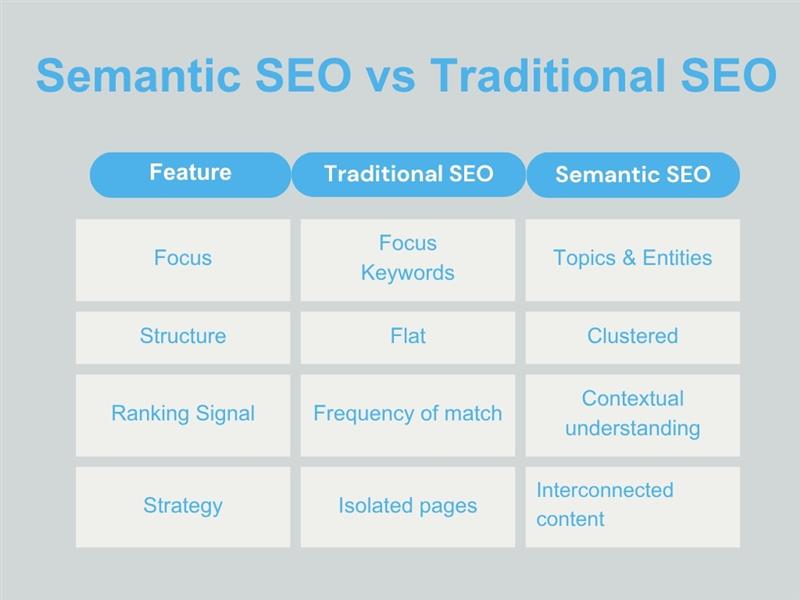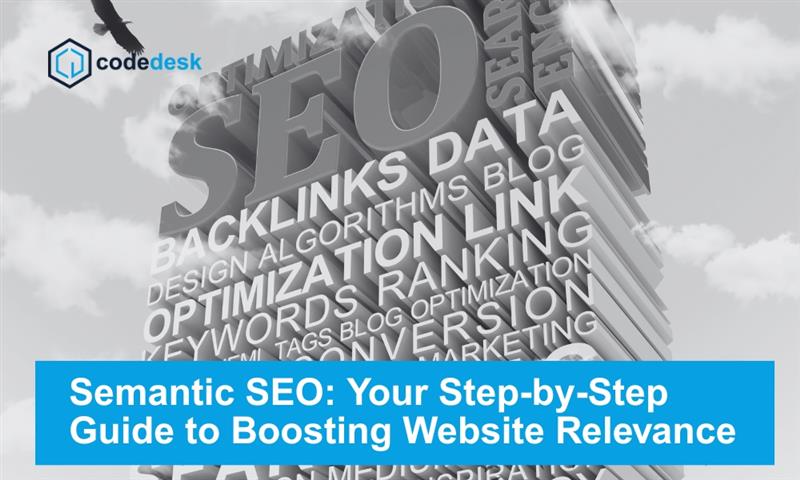Starting with Semantic SEO usually seems complicated at first, yet this detailed guide provides step-by-step instructions about semantic keyword detection and how to implement successful semantic SEO methods recommended by Ben Stace and other experts.
Getting Started With Semantic SEO
The SEO landscape has moved past basic keyword strategies and link-building techniques for the Top digital marketing agencies in the UK. The 2025 Google algorithms operate with enhanced contextual intelligence and intent-based processing capabilities. Businesses that want to stay competitive need to advance beyond standard methods because semantic SEO provides the solution.
This guide explains semantic SEO step by step to help you achieve better rankings while building your brand authority through contextual understanding of topics and entities.
What Is Semantic SEO and Why Does It Matter?
Semantic SEO involves optimising content based on meaning and context instead of relying on exact-match keyword phrases. Search engines receive a better understanding of your content’s meaning rather than simply processing the words you use. This new approach delivers exceptional long-term visibility potential to businesses.
Traditional SEO techniques prioritized individual keywords while semantic SEO methods emphasize:
- Topic clusters and entity relationships
- Latent semantic indexing (LSI) terms
- User intent over keyword density
- Structured data and contextual linking
Understanding the importance of semantic keywords in SEO is key here. A page about electric car maintenance needs to feature connected terms including EV charging and battery life along with Tesla service rather than repeating the main term many times.
Semantic SEO vs Traditional SEO: A Clear Shift
Let’s settle the semantic SEO vs traditional SEO debate.

In short, traditional SEO gets you found; semantic SEO makes you relevant. And in a search-first economy, relevance wins.
14 Essential SEO Tips for Beginners to Boost Rankings and Drive Results
1. Define Clear SEO Goals from the Start
Before diving into keyword tools or content planning, know exactly what you want to achieve. Whether it’s increasing sales, getting more newsletter sign-ups, or improving video views, your SEO strategy should align with tangible goals—not just traffic.
2. Use Google Analytics, Lighthouse & Search Console to Track Success
The free tools Google Analytics and Google Search Console play an essential role in determining successful strategies. The tools allow users to track website visitors and measure visitor engagement alongside conversion performance. Google Lighthouse helps identify performance issues, especially on mobile. These insights help fine-tune your SEO plan for better ROI.
3. Master Keyword Research with the Right Tools
Keywords are the bridge between what people are searching for and your content. Use tools like SEMrush or Ahrefs to find short-tail and long-tail keywords with solid search volume and low competition. Don’t forget to consider search intent—informational, navigational, or transactional.
4. Know the Difference: Short-Tail vs. Long-Tail Keywords
Short-tail keywords (e.g., “software developer”) have high competition. Long-tail keywords (e.g., “software development company in Manchester”) are more specific and easier to rank for—plus they attract users ready to convert.
5. Use LSI Keywords to Improve Relevance
Latent Semantic Indexing (LSI) keywords help search engines understand the context of your content. Tools like LSI Graph can help find relevant terms that clarify your content’s meaning and improve rankings.
6. Analyze Your Competitors Strategically
Identify your competitors backlink profiles along with their content advantages and ranking terms. The process reveals both missing elements and possible advantages together with assessment standards. SEMrush together with Ahrefs provide users with an easy method to perform competitor analysis.
7. Make Sure Your Website Is Mobile-Friendly
Mobile devices generate over fifty percent of all internet traffic. Your website loses visitors when it fails to adapt to mobile devices and Google will detect this issue.
8. Invest in Technical SEO for Better Site Health
Site speed together with crawlability and HTTPS security and broken link correction make up technical SEO components. The accessibility and indexability of your website lead Google to provide better ranking. You should consider hiring a professional or using Screaming Frog for website audits.
9. Stay Updated with SEO Trends and Algorithm Changes
Google frequently rolls out new algorithm updates to its search engine platform. Your strategies will stay effective if you follow trusted SEO blogs alongside industry news updates. The core value search engines prefer is delivering outstanding user experiences.
10. Know Your Target Audience Deeply
Identifying your audience characteristics through age and location alongside their intent and interests will direct your keyword selection and content style. Customized material produces higher conversion rates alongside better visitor retention.
11. Prioritize User Experience (UX)
Users tend to stay on websites which provide simple interface designs. A website needs to provide straightforward navigation with immediate loading and well-organised content paths. User experience stands as a crucial factor which Google uses to determine website rankings.
12. Improve Your Site Speed
Website visitors will leave if your pages take more than three seconds to open. The performance testing of your website should include Test My Site and GTmetrix tools for speed optimisation.
13. Create High-Quality, Mobile-Optimised Content
Develop content with useful information which solves user questions effectively. Use short paragraphs, clear headings, and bullet points—especially for mobile users. Maintain a natural writing style which targets readers instead of search engine optimisation.
14. Build Backlinks the Right Way
Google views links from trustworthy websites as indicators of website credibility. Develop white-hat backlink strategies through guest posting along with digital PR and link-worthy content creation which will attract natural backlinks over time.
Why You Should Invest in Semantic SEO Services
Semantic SEO is not a one-time checklist. It’s a strategic shift in how your brand is perceived online. Whether you’re a SaaS brand, eCommerce retailer, or local service provider, working with the best semantic SEO services company means:
- Full content audits
- Entity and topic mapping
- Structured content planning
- Conversion-driven content writing
From semantic SEO tools to team training, your journey to becoming a topic authority starts now.
Work With a Semantic SEO Expert Today
Are you preparing to secure your SEO success? The upcoming search engine update will focus on rewarding clear contextual information along with authoritative content. Engage a semantic SEO expert who will synchronize your brand message with search user intent along with search engine understanding.
Ready to rank for what matters? Let’s make your content smarter with Codedesk https://code-desk.com/services/top-digital-marketing-agency-uk/




